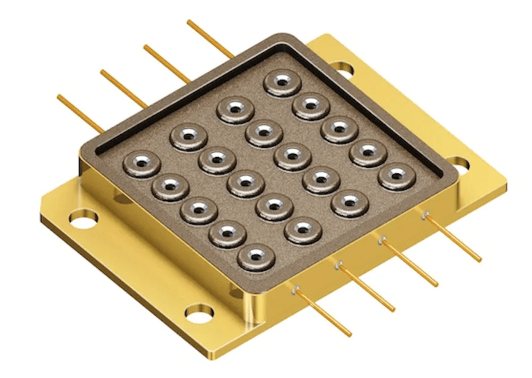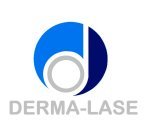Diode laser suppliers often quote ‘power’ when trying to sell their equipment. They know, of course, that most people don’t have a clue about what they actually mean!!
I wrote about this before (link) but here I go again…
Power
Power is essentially how quickly, or how slowly, energy is delivered. Remember, ENERGY is the most important issue when treating hair, tattoos, blood vessels, pigmentation etc. Energy drives everything!! In the entire universe…
What is this??? It’s got lots of energy…
When light energy is delivered into the skin, some of it is absorbed by atoms and molecules and this generates heat energy. The local temperature then rises – it gets hot!
If that energy is delivered in a very short time (like a few nanoseconds – billionths of a second) then there is no time for that heat to escape into the surrounding tissues while the light is still being delivered. This is a ‘high power’ situation – the energy is being delivered quickly.
If the same energy is delivered in a much longer pulse – say, a few milliseconds – then there is plenty of time for heat to ‘leak out’ of the absorbing target during the pulse. This means there is heat escaping while more heat is still being generated by the incoming light. As a consequence, the local temperature is not as high as with the ‘high power’ situation – simply because some of the heat energy has been lost to the adjacent tissues. This is a ‘low power’ situation.
So, how does this relate to diode laser systems?
A laser diode array
Diode Lasers
The diode lasers we use in aesthetic treatments are usually comprised of an array of little diode lasers (see above photo). Each diode laser delivers a small amount of energy, so they must be stacked up into an array to produce sufficient energy for our needs.
An individual array of diodes might generate an overall power of 1000 Watts. If we put that into a handheld device, we would then have a 1000W diode laser, with a spot size equal to the area of the array. This might be 1 cm2.
So, this 1000W array can deliver 1000 Joules of energy in 1 second (that’s the definition of ‘power’ – energy per second). This would be delivered in a 1 cm2 area. This means that this particular device can deliver a fluence of 1000 J/cm2 in 1 second.
But that’s way too much energy/fluence for our requirements. Typically, hair removal requires something like 20 to 50 J/cm2 to kill the follicles.
Here is where things get interesting…
Pulsewidth
How would the above unit deliver only 50 J/cm2, if that was what we actually required? Well, if we know that it can deliver 1000 J/cm2 in a 1 second time period, we just need to shorten the delivery time – or ‘pulsewidth’. In this scenario, if we shorten the pulsewidth to 0.05 seconds (which is 50 milliseconds), then only 0.05 * 1000 J/cm2 will be delivered to the skin – i.e. 50 J/cm2. (Incidentally, pulsewidth is also known as ‘pulse length’ or ‘pulse duration’!!)
This is how most of today’s aesthetic diode lasers operate – by merely choosing an appropriate pulsewidth, they can deliver the required fluence.
A 20 J/cm2 fluence would require a pulsewidth of only 20 ms, and so on.
Laser Diode System Powers
So, what is happening when a laser is outputting, say, 3000 Watts, instead of 1000 W? And how can they do this???
Well, there are two ways to achieve this:
1. The simplest way is to merely add more arrays. Two 1000W arrays will give you a total power output of 2000W. But, the spot size has also doubled, since we now have two arrays, each of 1 cm2. So, the fluence is exactly the same as with one array. They are both sticking out 1000 Joules in each second into a 1cm2 area.
Why would anyone do this? Well, this will increase the area you can treat at any one time. So, if you wanted to treat a large area, like legs or a back, then a larger spot size will allow you to do this in a quicker time compared with a smaller spot size. Simples!
The only real advantage of adding more arrays to your laser is the increase in spot size area – there is no increase in fluence. But if you’re treating lots of legs and back, then this may be a good option.
2. The second method is to increase the energy which each array can deliver. This is trickier because it means that the device must also provide more cooling to keep those arrays cool.
We could change the power output of an array so that it now outputs 1500 W instead of 1000W in the same spot size. So now it can deliver 1500 Joules in 1 cm2 meaning that the fluence has increased by 50%.
In this case, a 50ms pulsewidth will now deliver a maximum of 75 J/cm2, (0.05 * 1500), compared with the 50 J/cm2 with the 1000W device above.
If we added two of these arrays together, we would have a total power output of 3000W with a maximum fluence of 75 J/cm2.
To answer the first question, a 3000W laser might be one of three things:
- It might be 3 x 1000W arrays, or,
- it might be 2 x 1500W arrays,
- or it might even be a single 3000W array!
These will also have different spot sizes (3cm2, 2cm2 and 1cm2 respectively – assuming the above conditions).
Conclusion
It’s all very confusing!!
In a nutshell, increasing the power output of a diode laser can result in either a larger area on the skin surface with the same maximum fluence as with the lower powered units, or, a higher available fluence in the same spot size area…
What ultimately matters is that you have sufficient fluence to reach the deepest targets. It’s the fluence that matters most – insufficient fluence will always lead to poor results, regardless of the power.
So, as they say – “buyer beware”!
Remember, it’s not rocket science – it’s laser science…
Hope this didn’t confuse you too much…
Mike.

PS This is available in a pdf format for your pleasure and enjoyment.
PPS I will be discussing all this and more at our next MasterClass in Luton, London on September 24th and 25th. Contact us on lisa.dermalase@gmail.com for more details.





Looking for a good laser technician who is honest (I need a repair for a Lightsheer xc.) I live in Toronto. Any suggestions ?
Sorry, I don’t know anyone in Canada!
Laser diodes are essential in many modern applications, from optical communication to medical devices. One key feature is their power output, which can range from a few milliwatts (mW) for simple pointers to several watts for industrial applications. Higher-power diodes are ideal for cutting or welding, while lower-power diodes are well-suited for data transmission and consumer electronics. Selecting the right laser diode power depends on the task’s precision and energy requirements, as higher powers typically mean greater heat output and power consumption.
Hi Robert,
Yes indeed! My discussion applies to those diode systems used in hair removal procedures. These are typcially between around 500 and 5000 Watts. This means that the pulsewidth required to generate the desired energy output, depends on the unit’s power output. Unfortunately, most diode suppliers ‘forget’ to mention this to their cusomters…